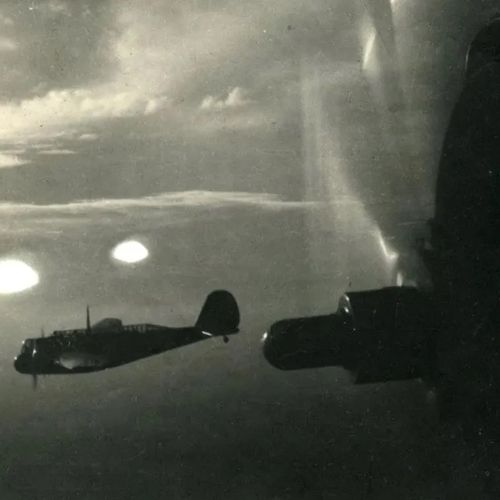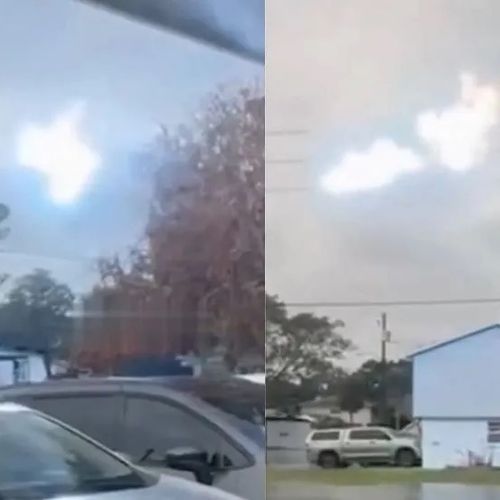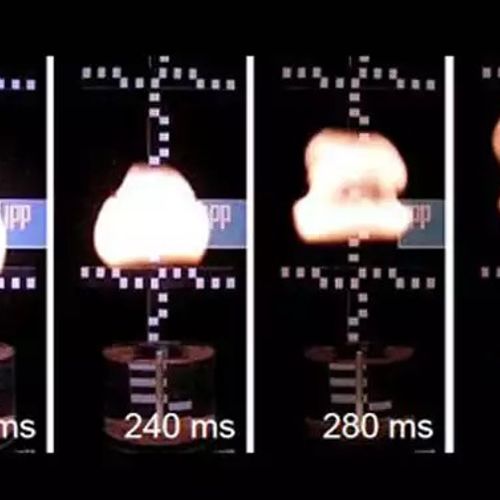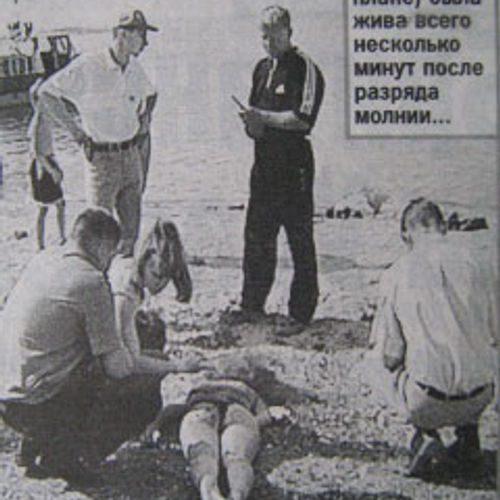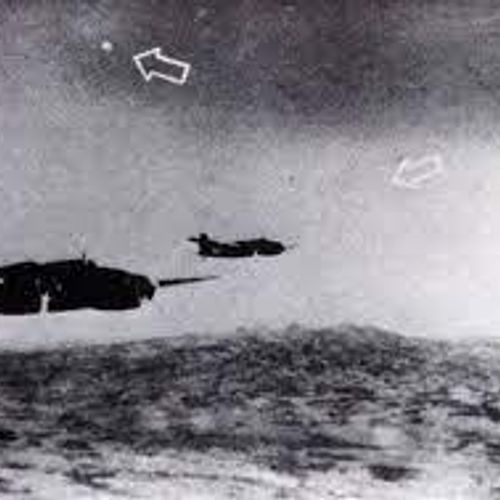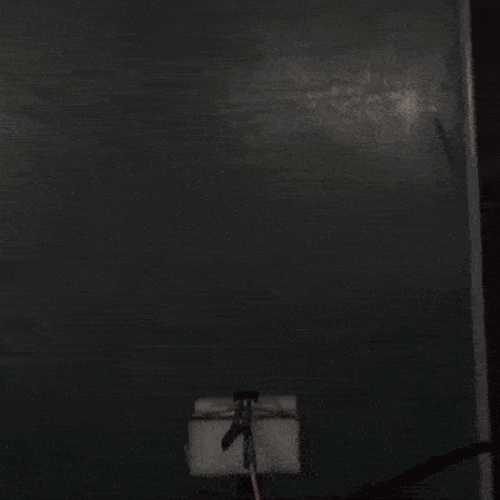
| Added | Thu, 04/04/2024 |
| Источники | |
| Дата публикации | Thu, 04/04/2024
|
| Версии |
Ball lightning is one of the rare natural mysteries of our time. Some even consider them fiction. However, physicists from Moscow State University managed to reproduce this phenomenon in the laboratory and capture glowing balls "jumping" on the table in photographs. Scientists believe that they have solved the riddle of fireballs: in their opinion, they look most like balloons filled with red-hot gas. And they are really capable of harming people.
A fireball is a relatively small luminous spherical object that sometimes appears in an unexpected place during a thunderstorm. It would seem that the word "lightning" in the name should indicate the electrical nature of this object, but so far scientists cannot agree on this issue. For example, academician Peter Kapitsa suggested that glowing balls could be gas discharges (similar to an electric arc during welding) that move along the lines of force of an electromagnetic wave that arose in a thunderstorm.
According to another common point of view, ball lightning is an urban legend or hallucination.
Since mentally healthy people cannot see hallucinations without external influence, an explanation is attached to this theory. So, supposedly, such powerful magnetic fields can arise from lightning discharges that they disrupt the brain and generate visions.
However, such hypotheses also have no laboratory confirmation: there have been no experiments in which using a magnetic field it was possible to make people see fireballs, and not spots of light in front of their eyes, which are difficult to confuse with a physical object. Attempts to write off cases of their observation as fantasies are also not credible. For example, for a long time, the killer waves, whose height far exceeds the surrounding excitement, were considered an invention of sailors. According to old scientific theories, in the open sea, all waves in each place have a fixed height, depending mainly on the wind. Only in the last couple of decades have scientists been able to reproduce killer waves in a laboratory pool and theoretically explain their appearance, thus justifying the sailors accused of lying.
Similarly, physicists are trying to uncover the secret of ball lightning by getting it in the laboratory.
Vladimir Bychkov is a leading researcher at the Physics Department of Moscow State University, Doctor of Physico—Mathematical Sciences and a specialist in plasma and gas discharge physics. He regularly conducts university seminars on ball lightning and, curiously, his interest in this topic was spurred by personal observations.
"The last time I saw a fireball was in 2005. At that time, I was invited to lecture at the Rockwell International Science Center, located in the California city of Thousand Oaks.
Late in the evening, I was walking from the laboratory along a mountain path and suddenly saw that a luminous, strikingly white ball appeared on top of a palm tree located under the mountain. He slowly descended, after which he disappeared within two seconds.
Unfortunately, it was very far away, so it was impossible to consider its details and structure," the physicist said in an interview with Gazeta.Ru».
Having conducted many experiments since that moment, Bychkov came to the conclusion that the ball he saw, like other ball lightning, is a red—hot and charged vapor inside a pseudo-solid shell. And they arise like this:
"Ordinary lightning strikes the earth's surface. The released energy evaporates part of the soil and forms a cavity in it. The outer layers of the steam cloud quickly solidify and lock the steam inside, forming a ball. This ball flies out of the ground at the speed of sound, but in the end it must slow down under the influence of the atmosphere — it is precisely because of the high initial velocity that it seems to people that ball lightning appears out of nowhere," explains Bychkov's theory.
In simple terms, a ball lightning bolt within the framework of this concept is like a balloon inflated with hot gas. If the temperature of an object is a couple thousand degrees or more, then it will glow very brightly.
However, according to the description of many witnesses, fireballs do not always fall to the ground like a balloon, but are able to levitate. This can be explained by the presence of an electric charge. Lightning can have both a positive and a negative charge, and the surface of the earth is negatively charged. Since two bodies with a charge of the same sign repel each other, a ball lightning caused by a negative linear lightning strike will levitate above the ground.
The shell of such a ball lightning, as a rule, consists of oxides, for example, SiO2, the main material of sand, but may also contain Al2O3. The wall thickness should not exceed several microns, but its strength allows it to withstand significant pressure differences between the atmosphere and steam inside.
The theory presented by Bychkov may seem fantastic to some, but it is based on laboratory experiments of the last few years. They were arranged in different ways, but mostly they used an electric discharge entering a solid material - that is, they simulated a linear lightning strike into the ground.
"For example, we act with a charge on an aluminum plate.
As a result, we get glowing balls that jump on the surface, and then explode. Their size is very small, on the order of millimeters, but when they explode, they leave star-like traces on paper.
When the ball fell into the water (we specially substituted the cuvette), a metal sphere fell out, and a shell floated next to it. The study showed that the sphere is almost pure aluminum, and the "shell" is Al2O3 oxide," the scientist tells about the experiments.
The main stages of the experiment were recorded on camera. The resolution of some images is small, but some of them clearly show a glowing ball that fits the description of a ball lightning bolt, but in miniature. A luminous object cannot be just a bright spark, because after falling into the water, its spherical core and thin shell are clearly visible.
If the concept of Bychkov and his colleagues is correct, then ball lightning is really capable of causing great destruction. Firstly, the incandescent gas itself, which is inside under pressure, is dangerous. Inside the balls obtained at the physics department, the pressure does not exceed two atmospheres, but inside real fireballs it can reach up to ten.
This is enough for a shock wave to occur when the shell breaks, that is, the ball lightning will explode. In addition to the explosion itself, the released incandescent gas is capable of igniting objects and burning people.
Secondly, ball lightning can receive a large electric charge, and if it has a value of the order of 10-2 coulomb, it carries a serious danger to humans. In addition to the electric shock itself, this charge, upon contact with objects, will release energy in the form of heat, that is, it will repeat a lightning strike in miniature.
The flight of a negative ball lightning can last until the positive air ions compensate for its charge and cause it to fall. According to the experts of the physics department, the recombination of ball lightning charges can take about 150 seconds, and cooling to a temperature below the cessation of luminosity — about 200 seconds. However, these data are obtained by theoretical modeling, in practice the lifetime is shorter.
"A 20-centimeter ball lightning will live for about 20-30 seconds, and the larger it is, the longer," the scientist summarizes. During this time, it can fly far away from the place where the linear lightning hits, so that a person will not even notice the direct connection between the lightning discharge and the glowing ball.
Are there any other possible explanations?
The authors believe that their concept should well explain the rarely seen irregular shape of fireballs. For example, there are unconfirmed reports of a glowing object similar to a fireball, but seemingly having a long ribbon. The presence of this tape cannot be explained if we consider the ball lightning to be a gas discharge. However, if we consider lightning to be a cloud of steam in a thin shell, then we can assume that for some reason it did not turn out to be perfectly round, but has a tail.
The fact that the luminous balls obtained in the MSU laboratory are identical to natural fireballs has yet to be proved — and it cannot be excluded that several phenomena can generate externally similar objects at once. Ideally, to analyze a natural ball lightning, it should be photographed from a close distance. The probability of this is low — about the same as shooting a lightning strike from a distance closer than ten meters. However, as the world is increasingly covered by surveillance cameras, and drones with a video camera are turning from a curiosity into a commonplace, the chances of this are increasing.
Новости со схожими версиями
Log in or register to post comments






